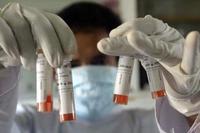 It would seem that American researchers from the Centers for Disease Control and Prevention in Atlanta have managed to recreate and revive the 1918 Spanish flu virus in hope that discovering what triggered its virulence will contribute to fighting a potential avian flu pandemic.
It would seem that American researchers from the Centers for Disease Control and Prevention in Atlanta have managed to recreate and revive the 1918 Spanish flu virus in hope that discovering what triggered its virulence will contribute to fighting a potential avian flu pandemic.The results of their study published today in Science and Nature provide useful information. Information they had to dig up a female victim of the Spanish Flu in Alaska for, mind you. Her frozen lung tissue were used to recreate the virus’ genetic code. Their analysis suggest that the 1918 virus (H1N1) was originally avian but later adapted to humans. Interestingly enough, the virus currently propagating amongst birds is an adaptation on this virus: H5N1.
Using reversed genetics or positional cloning, Terrence Tumpey of CDC and his team recreate the virus and conducted a series of experiments to understand its virulence. When you know that the 1918 Spanish flu affected over 500 million people and killed between 20 and 50 million of those according to most estimates, the results are rather worrying:
- 50 times as many virus particles are released from human lung cells a day after infection with the 1918 virus as are released after exposure to a contemporary strain called the Texas virus,
- 13% of body weight is lost by mice 2 days after infection with 1918 flu; weight loss is only transient in mice infected with the Texas strain.
- 39,000 times more virus particles are found in mouse lung tissue 4 days after infection with 1918 flu than are found with the Texas virus.
- All mice died within 6 days of infection with 1918 flu; none died from the Texas strain.
You get the picture. What we have here sitting in an American laboratory is probably the most effective bioweapon known to man.
So of course, they are protecting it the best they can… Or are they?
An enhanced biosafety level-3 lab (upper body suits and respirators required) was used for the work. All good, unless you know that a level 4 exists where for instance full body suits are required and unless you also know that in 2003 a SARS virus escaped accidentally from a level-3 lab in Singapore, and in 2004 two further escapes occurred from such labs in Beijing. Hmmm…
I mean, it’s not as if the US had enemies, either individuals or States, who would love to get their hands on it for instance. Theft by a disgruntled, disturbed or extremist laboratory employee is hardly out of the question too. The re-creation of the full genome sequence of the virus and its mandatory publication on the GenBank database are also rather worrying: anyone can apparently order DNA to be made to a certain sequence and that there are currently no governmental controls on what sequences can be used. The technology is available and the only barrier anyone would face would be the screening of DNA orders by DNA synthesis companies for pathogenic sequences…
I would appear however that even if it did escape, it wouldn’t have the same consequences as it did in 1918 as most people now have some immunity to the 1918 virus because subsequent human flu viruses are in part derived from it. We might not face a Twelve Monkeys scenario just yet, then…






No comments:
Post a Comment